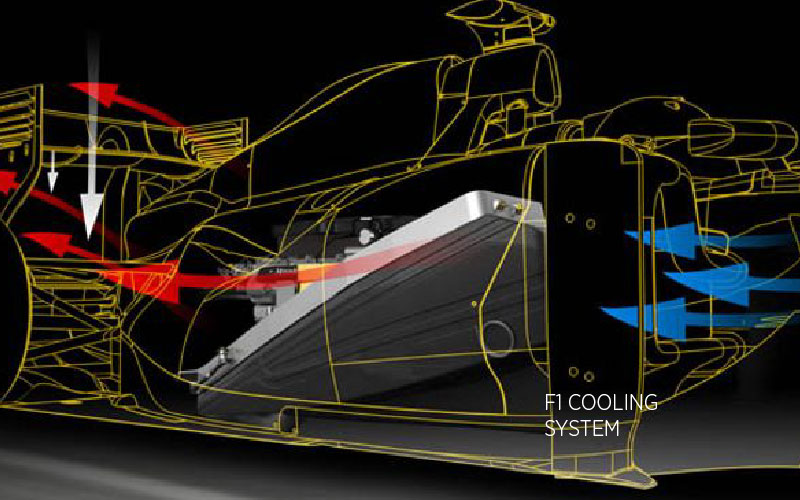WHAT MAKES A CAR A SUPERCAR
- supercars.com.gh
- April 29, 2022
HOW DOES YOUR CAR'S COOLING SYSTEM WORK

The major components of a regular car’s cooling system are the fan, radiator, and specially-formulated coolant. These parts work to maintain the combustion chamber’s temperature at 1,500°C.
REGULAR CAR COOLING SYSTEM
A regular car’s cooling system has an anti-corrosive water-glycol coolant that draws heat from the engine. Once it is hot enough, the thermostat opens to allow the coolant into the radiator grille. Here, air from the fan cools it before the liquid flows back into the engine to draw heat again.
Air flowing through large windows cools down the interior. An AC system cools or heats the car using a refrigerant. The combustion chamber of a Formula One car can easily reach 2,600°C during a race. With 12,000 RPM, the F1 cooling system requires a more complex system. At this level, a sizzling hot engine like that could lead to a fire.
FORMULA ONE CAR COOLING SYSTEM
Luckily, the F1 cooling system uses a combination of multi radiators, oil-based, and glycol-based coolants to lower the car’s temperature.A water-glycol coolant runs through the F1 car like in regular vehicles. F1 cars, though, have multiple radiators in the sidepods around the cockpit to hasten the cooling process.
Other parts, like the gearbox, use an oil-based coolant that passes through a dedicated channel cooled by another radiator. The F1 car engine also comes with an intercooler that cools the high-pressure air produced by the 1,000-horsepower turbocharger.
Meanwhile, the car receives air through brake ducts and other inbuilt inlets to cool the cockpit. When the air heats up, it dissipates via exhaust pipes and slats gaping at the car’s sides.

THE DIFFERENCE BETWEEN F1 AND REGULAR COOLING SYSTEM
F1 car cooling systems include an intercooler. The intercooler reduces the temperature produced by the turbocharger. Regular cars don’t have turbochargers and hence don’t require intercoolers.
Fans propel air into the engines of regular cars. In addition to large windows and AC systems, they use water-based coolants to cool the vehicle.
Though they lack air conditioning, F1 cars have several inlets for air inflow. Some use water jackets to cool heated air in the cockpit. Oil-based coolants cool other parts of the F1 car.
ARE THERE OTHER TYPES OF COOLING SYSTEMS FOR EACH
Cars use either water or air cooling systems. Air-cooling involves cooling the engine via air-inflow alone. Instead of radiators, they use fins and ducts to transfer heat.
Most F1 teams use an air-to-air intercooler where inflowing air cools the heated cockpit. Others use a water-to-air intercooler to cool heated air using water.

WHICH AC COOLING SYSTEM IS MORE EFFICIENT
The most efficient cooling system depends on the purpose of the vehicle. Regular cars no longer use air-cooled systems in their engines because they heat up faster. Water-cooled cockpits make F1 cars heavier and less efficient. However, they are more efficient in cooling down F1 car engines.
Powered at 1,000HP with the brake heating at an astonishing 500°C to 1,000°C, the F1 car’s cooling system works overtime to keep the cockpit from overheating. A regular car, however, uses large windows and air conditioning to keep its interior cool.
Now you know the difference between an F1 car cooling system and a Regular car cooling system. If you love cars and like to know about how they work and the latest trends in the car world, go ahead and subscribe to our blog for more topics like this one.
Have Any Question?
If you have a question, call or email us.
We will get back to you as soon as possible!









